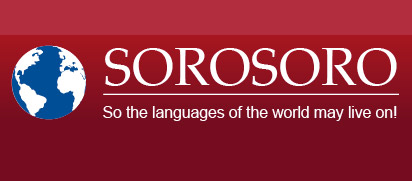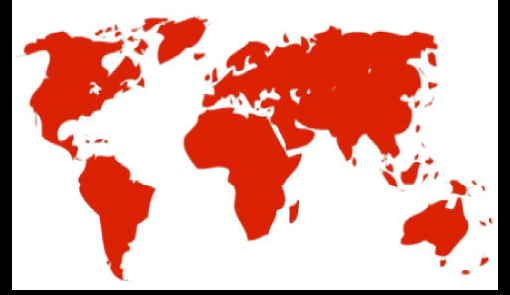Print  |
|


Guinea-Bissau Creole
Page created by Nicolas Quint, research associate in African linguistics, and Noël-Bernard Biagui, (LLACAN PhD, CNRS-UMR 8135 / INaLCO), 2010.
Data on the language
Name of the language: Guinea-Bissau Creole
Alternative names: Afro-Portuguese Creole of Guinea-Bissau, Kriyol (in Guinea-Bissau Creole)
Classification: Afro-Portuguese Creole of West Africa.
This language belongs to the same family as Casamance Creole, Cape Verdean, and Papiamentu. It is particularly close to Casamance Creole.
Main dialects:
– Bissau Creole (that of the city of Bissau)
– Geba and Farim Creoles
– Cacheu Creole
Geographical area:
In Guinea-Bissau, Guinea-Bissau Creole (in fact the dialect of the city of Bissau) serves as a first language in the actual city of Bissau (capital) and in most cities in the country, and serves as a trade language in the rest of Guinea-Bissau.
Guinea-Bissau Creole is also spoken by groups established in Senegal (district of Tilène in Ziguinchor, town of Goudomp, Sédhiou area, Kolda Region).
Number of speakers:
At least 500,000 as a first language, and over a million considering speakers who use Guinea-Bissau Creole daily as a trade language.
Language status:
Guinea-Bissau Creole has a dominant status in the oral sphere of Guinea-Bissau, although Portuguese does remain the country’s main language in education and administration (in spite of a few experiments in bilingual literacy teaching – Guinea-Bissau Creole/Portuguese – especially in certain Catholic private schools).
Vitality & Transmission:
Guinea-Bissau Creole is expanding significantly, and is about to replace local African languages for the children and youngsters of numerous parts of the country, including rural areas. Immigration from Guinea-Bissau maintains Guinea-Bissau Creole spoken in Senegal.
Media/Literature/Education:
The language is used on the radio and television, concurrently with Portuguese.
Historical, ethnographic, and sociolinguistic observations
Varieties of Guinea-Bissau Creole were probably spoken as mother tongues back in the 17th century in the Portuguese trading posts of Cacheu, Geba, Bissau, and Joal, on the Serer coast (where the local Creole disappeared in the 19th century), and perhaps even in Gorée, Rufisque, and Saint-Louis.
The debate raging among creolists regarding the origins of Creole in the Guinea-Bissau and Senegal areas aims to determine whether these idioms actually developed there, or if they originated from Cape Verdean (imported onto the continent by the Cape Verdean merchants who came along with the Portuguese).
Modern Guinea-Bissau Creole shares one and the same Afro-Portuguese background with the other Afro-Portuguese Creoles of West Africa, but has also been affected by the influence of Guinea-Bissau adstrats (Balanta, Mankanya, Mandinka, Manjack, Papel, etc.)
Linguistic observations
Guinea-Bissau Creole is an analytical type-SVO language. It shows analytical causative verbal extension (in –VntV), which, among the other Afro-Portuguese Creoles of West Africa, is only observed in Casamance Creole.
Guinea-Bissau Creole (Bissau dialect) involves a process of vocalic closure on Portuguese items, which draws a distinction from Casamance Creole and Cape Verdean: Bissau Creole « algiŋ », someone vs. Casamance Creole « algeŋ » and Cape Verdean « algem ».
Sources & Bibliography
ANDRADE, Ernesto, GOMES, Alfredo, TEIXEIRA, Inês (1999) : « Observações sobre o Sistema Acentual do Crioulo da Guiné-Bissau (CGB) », In : Ernesto ANDRADE e Alain KIHM (orgs) : Actas do Colóquio sobre Crioulos de base lexical portuguesa. Lisbonne : Edições Colibri, pp 135-140.
BIASUTTI, Pe. Artur (1981) : Vokabulari Kriol-Purtugîs. Bafatá : Missão Católica de Bafatá.
BULL, Benjamin Pinto (1975) : Le Créole de la Guinée-Bissau. Structures Grammaticales, Philosophie et Sagesse a travers ses Surnoms, ses Proverbes et ses Expressions. Dakar : Faculté des Lettres et Sciences Humaines.
CHAPOUTO, Sandra Marisa (2007) : « Fonologia do guineense ». Tese de Mestrado. Coïmbre : Universidade de Coimbra.
COUTO, Hildo Honório (1994) : « O Crioulo Português da Guiné-Bissau ». Hambourg : Helmut Buske Verlag.
COUTO, Hildo Honório (1995) : « Exclusive particles (ideophones) in Guinea-Bissau creole ». In : Philip BAKER (org) : From contact to creole and beyond. 1 ed. Londres : University of Westminster Press, v. 1, pp. 207-215.
COUTO, Hildo Honório (1996) : « O componente nasal das consoantes pré-nasalizadas do crioulo da Guiné-Bissau: um caso de extrassilabicidade? ». Porto Allegre, Letras de Hoje, v. 31, n. 2, pp. 119-128.
HOLM, John and INTUMBO, Incanha (2009) : Quantifying superstrate and substrate influence, In: Journal of pidgin and Creole Languages 24 :2. Amsterdam/Philadelphie : John Benjamins Publishing Company, pp. 218-274.
INTUMBO, Incanha (2007) : Estudo comparativo da morfossintaxe do crioulo de base Portuguesa e Espanhola. Coïmbre : Universidade de Coimbra.
KIHM, Alain (1980) : Aspects d’une syntaxe historique. Etudes sur le créole portugais de Guinée-Bissau. Thèse de Doctorat de 3e cycle. Paris : Sorbonne Nouvelle.
KIHM, Alain (1994) : « Kriyol Syntax: the Portuguese-based creole language of Guinea-Bissau ». Amsterdam/Philadelphie: John Benjamins.
MBODJ, Chérif (1979) : « Phonologie du créole de Guinée-Bissau ». Dakar : Centre de Linguistique Appliquée de Dakar (CLAD).
PECK, Stephen Madry (1988) : Tense, aspect and mood in Guinea-Casamance Portuguese Créole, PhD Thesis. Los Angeles : University of California, USA 476 p.
ROUGE, Jean Louis (1988a) : En apprenant le créole à Bissau ou Ziguinchor. Paris : l’Harmattan, 113 p.
ROUGE, Jean Louis (1988b) : Petit dictionnaire étymologique du kriol de Guinée Bissau et de Casamance. Bissao : INEP, Bissau, 163 p.
ROUGE, Jean Louis (1985) : Formation et évolution du lexique du créole portugais de Guinée Bissau et de Casamance. Thèse de Doctorat. Lyon : Université Lyon 2, 192 p.
SCANTAMBURLO, Luigi (1981) : Gramática e dicionário da língua criol da Guiné-Bissau (GCr). Bologne: Editrice Missionaria Italiana.
SCANTAMBURLO, Luigi (1999) : Dicionário guineense. Volume I: Introdução e notas Gramaticais. Lisbonne: Edições Colibri, Faspebi, 218 p.
SCANTAMBURLO, Luigi (2002) : Dicionário do Guineense. Vol. II: Dicionário Guineense- Português. Disionariu guinensi-purtuguis. Lisbonne: Edições Colibri, Faspebi.
SEMEDO, Odete da Costa (1996a) : « Entre o ser e o amar ». Bissao: Instituto Nacional de Estudos e Pesquisa (Inep). Prefácio de Carlos Lopes. (Série literária, Colecção Kebur, v. 3).
WILSON, William André Auquier (1962) : « The Crioulo of Guiné ». Johannesburg: Witwatersrand University Press.
Please do not hesitate to contact us should you have more information on this language: contact@sorosoro.org








